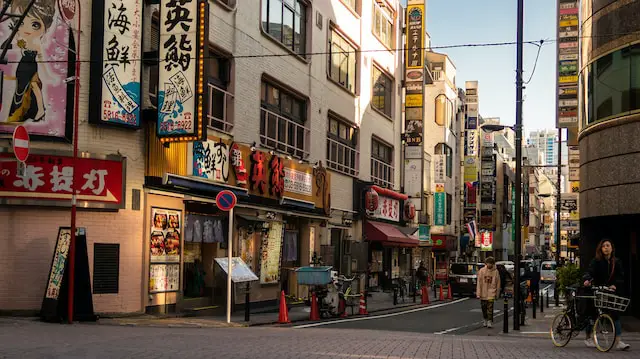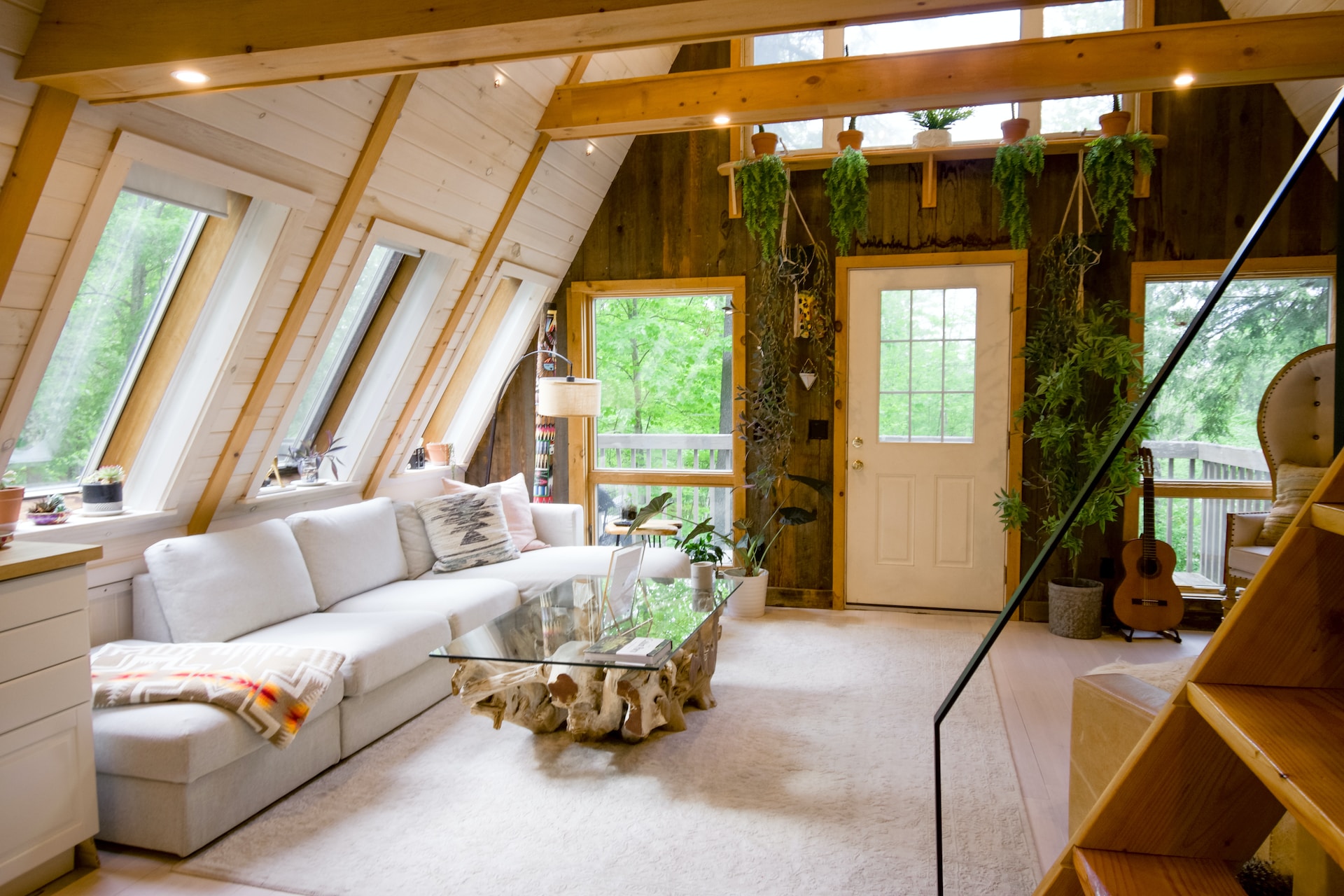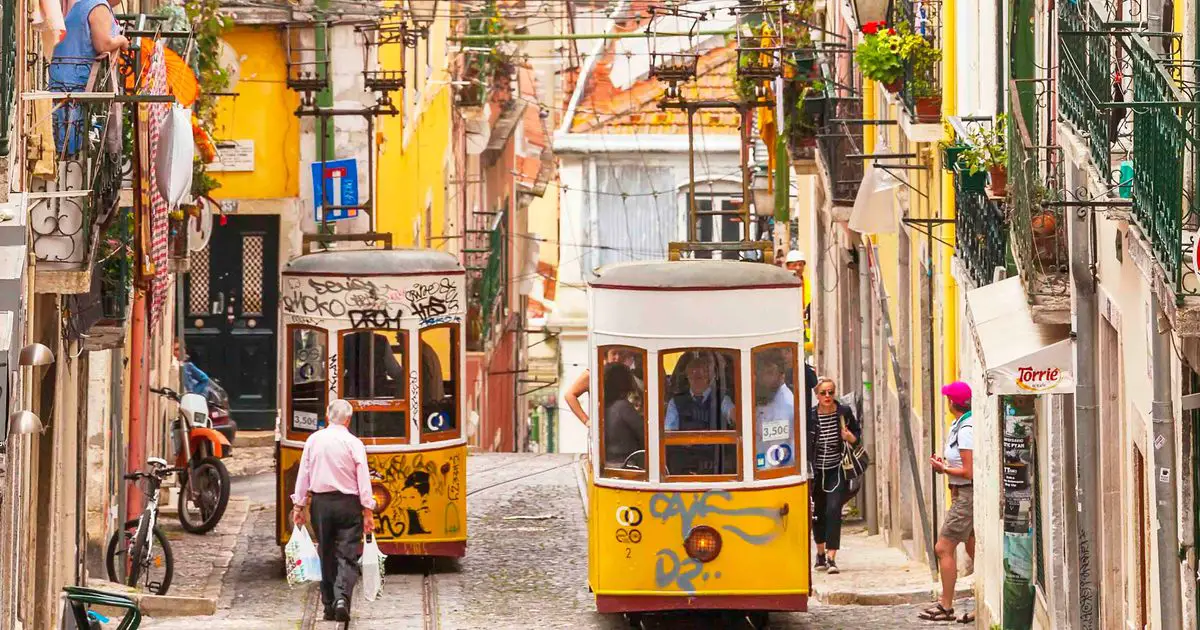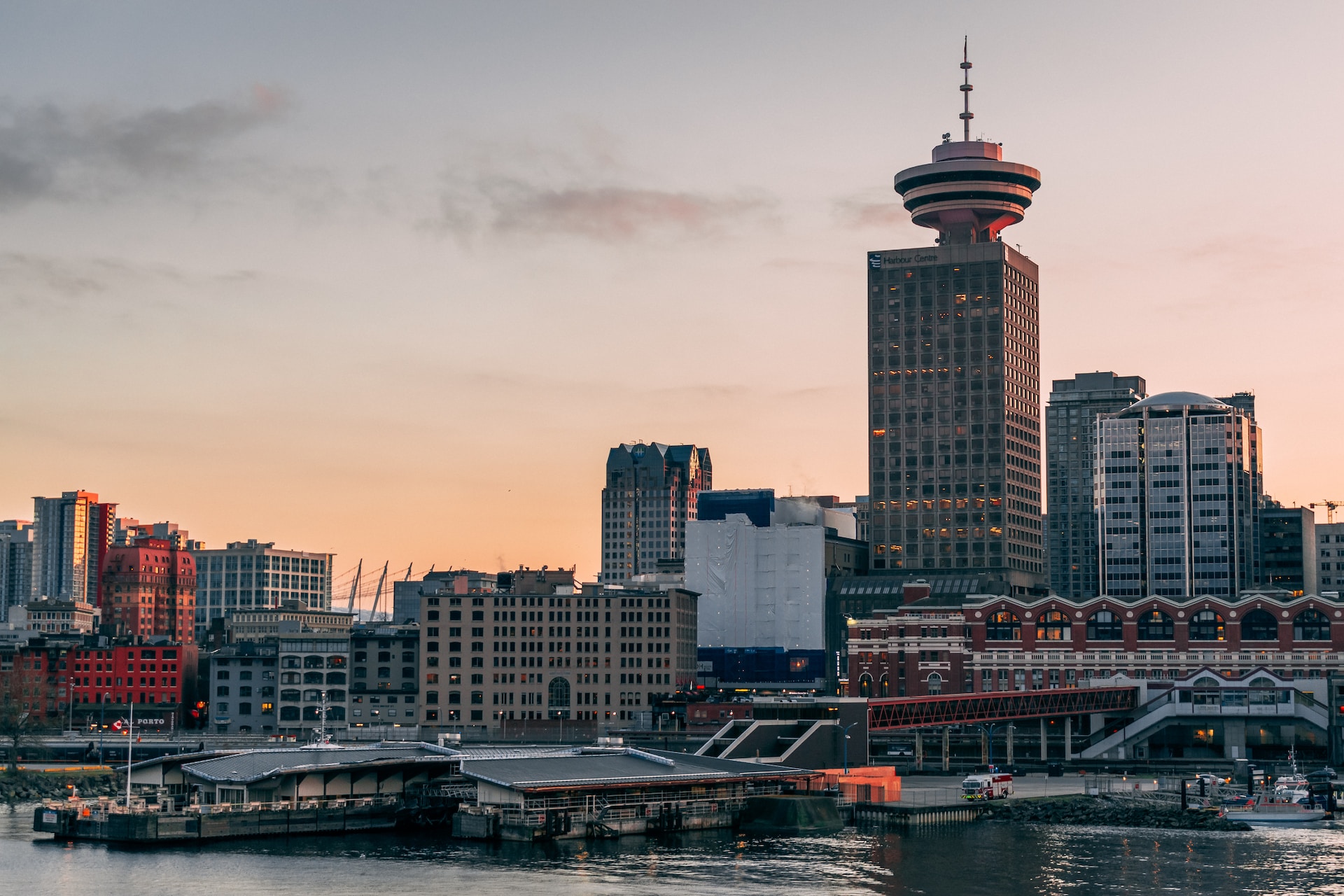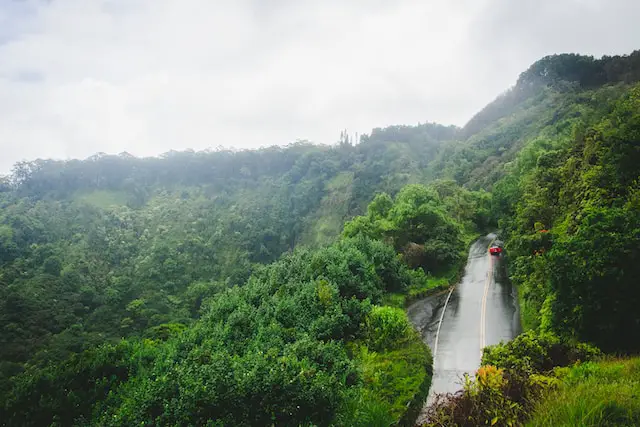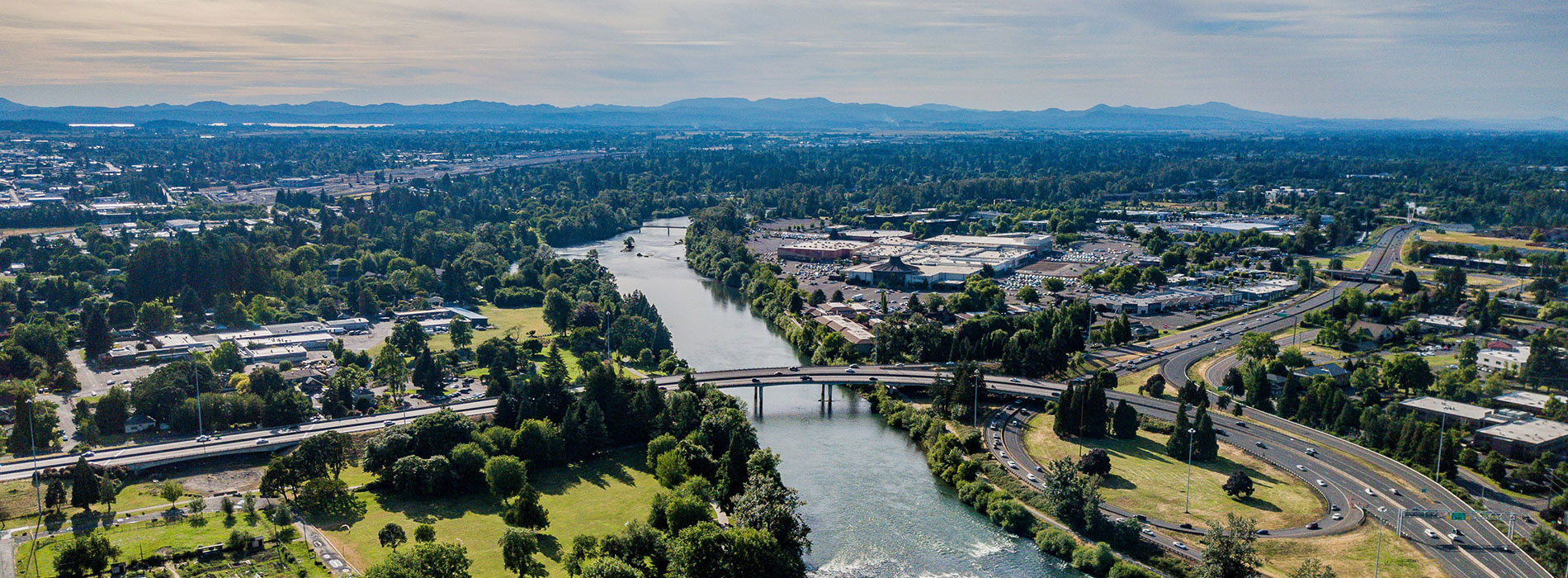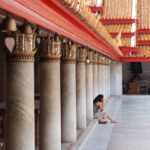Osaka, known as Japan’s kitchen, is a city that represents an amalgamation of the country’s traditional past, vibrant present, and promising future.
Located in the Kansai region on the island of Honshu, it is the country’s third most populous city after Tokyo and Yokohama. But the position doesn’t limit Osaka from being one of the most lively, colorful, and remarkable places in Japan, where culture, history, cuisine, and modernity converge.
In the heart of Osaka is Dotonbori, a district renowned for its dazzling neon lights, spirited entertainment, and diverse food options. Here, tourists can visit the iconic Glico Man sign, a beloved symbol of the city. Dotonbori is not just about the glitz and glamour of modern Japan, though. It offers a taste of the country’s famous culinary heritage, with food stalls and restaurants lining its bustling streets. Takoyaki (octopus balls), okonomiyaki (savory pancakes), and kushikatsu (deep-fried skewers) are staples not to be missed.

Close to Dotonbori, one can find Shinsaibashi Shopping Arcade, a 600-meter long shopping paradise that appeals to both the budget-conscious and luxury-seeking shoppers. Not far away, you can encounter Amerikamura, a district known for its American-influenced youth culture and fashion trends, creating a fascinating blend of Western and Eastern cultures.
Osaka is a city that proudly preserves its historical legacy. The Osaka Castle, an emblem of the city, is one of the most visually stunning examples of this. Built in 1583 by Toyotomi Hideyoshi, a significant figure in Japan’s unification, the castle is surrounded by a deep moat and lush parkland. Its museum offers insights into the city’s rich history, housing numerous artifacts from the Azuchi-Momoyama and Edo periods. The view from the castle’s eighth-floor observation deck is breathtaking, showcasing the city’s remarkable skyline, a blend of the old and new.
Osaka’s cultural richness extends beyond the castle’s walls. The Sumiyoshi Taisha Shrine, one of Japan’s oldest Shinto shrines, showcases unique architecture, believed to predate Chinese Buddhist influence. Thousands of visitors flock to this sacred spot during the Hatsumode (New Year’s visit), symbolizing Osaka’s commitment to time-honored traditions and rituals. The city is also home to the Osaka Museum of Housing and Living, giving visitors an intriguing glimpse into life in Osaka during the Edo period through recreated buildings and streets.
On the other end of the historical spectrum, you find Osaka’s ultra-modern, futuristic appeal. The Umeda Sky Building, a 173-meter-tall architectural wonder, is one example. Its stunning Floating Garden Observatory offers a 360-degree panoramic view of Osaka, providing a striking contrast against the historic sights of the city.
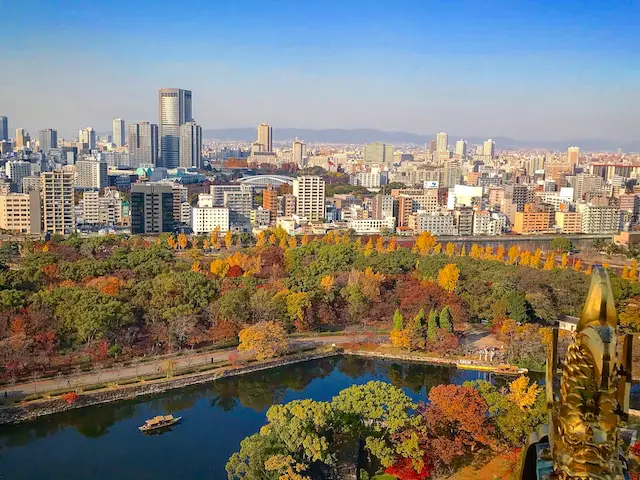
Osaka’s commitment to innovation isn’t limited to architecture, as evident in its technological advancements. The city has made significant strides in sectors like robotics, contributing significantly to Japan’s status as a global tech leader. Notably, it hosts the annual World Robot Expo, attracting exhibitors and visitors worldwide to showcase and witness the latest developments in robotics.
An intriguing aspect of Osaka is its inhabitants, known as the Osakans. They are renowned for their warm, lively nature and distinctive sense of humor, which significantly contributes to the city’s unique charm. The locals’ love for comedy is embodied in the Namba Grand Kagetsu, a theatre featuring performances by Yoshimoto, a famous comedy troupe.
The spirit of Osaka is perhaps most evident in its matsuri (festivals), the most famous being the Tenjin Matsuri. This festival is one of Japan’s three greatest festivals and is held annually on July 24th and 25th. This spectacular event, which began in the 10th century, is a magnificent showcase of Osaka’s vibrant culture and deep-rooted traditions. The Tenjin Matsuri is dedicated to Sugawara Michizane, a scholar, poet, and politician of the Heian Period revered as the deity of learning and scholarship.
The festival features a range of activities, but it is most known for its lively processions on land and in the water. Thousands of people dressed in traditional Heian-period costumes participate, creating a colorful and captivating scene. The land procession, known as Rikutogyo, involves a parade of sacred palanquins, portable shrines, and floats, accompanied by traditional music. The procession makes its way through the city’s streets before arriving at the Okawa River.
At the river, the water procession, or Funatogyo, takes place, featuring a flotilla of boats adorned with lanterns. As night falls, these lanterns illuminate the river, creating a magical spectacle reflected in the water. The boats carry the deities up and down the river, accompanied by traditional music and dance performances, as fireworks light up the sky, marking the climax of the festival.
The Tenjin Matsuri encapsulates the soul of Osaka — it is full of energy, warmth, and a strong sense of community, where history and tradition intermingle with the city’s dynamic spirit.
Another notable aspect of Osaka is its unique dialect, known as Osaka-ben. It is characterized by its distinctive intonation and vocabulary that set it apart from standard Japanese. It’s widely used in manzai, a traditional style of stand-up comedy native to Osaka. This dialect further adds to Osaka’s unique cultural identity, and hearing it spoken adds an extra layer of authenticity to the Osaka experience.
In terms of accessibility, Osaka is served by two airports: Kansai International Airport for international flights and Osaka International Airport for domestic flights. The city’s comprehensive transportation network, including extensive subway and train lines, makes moving around easy and convenient.
For sports enthusiasts, Osaka offers a range of options. Osaka Dome, also known as Kyocera Dome Osaka, regularly hosts baseball games and concerts. The city was also one of the host cities for the Rugby World Cup in 2019, showcasing its capabilities as an international sporting venue.
Osaka’s dedication to education and research is evident in its numerous universities and research institutions. Osaka University is one of Japan’s leading universities, contributing significantly to advancements in various fields.
In conclusion, Osaka is a city where past and present coexist in a fascinating balance. It seamlessly marries its rich history and traditions with a vibrant and forward-looking modernity. From its bustling street food stalls to its cutting-edge architecture, its ancient shrines to its lively festivals, Osaka offers a truly unique Japanese experience. It’s a city that lives and breathes a distinctive culture, promising endless discovery and delight to those who choose to explore it.
